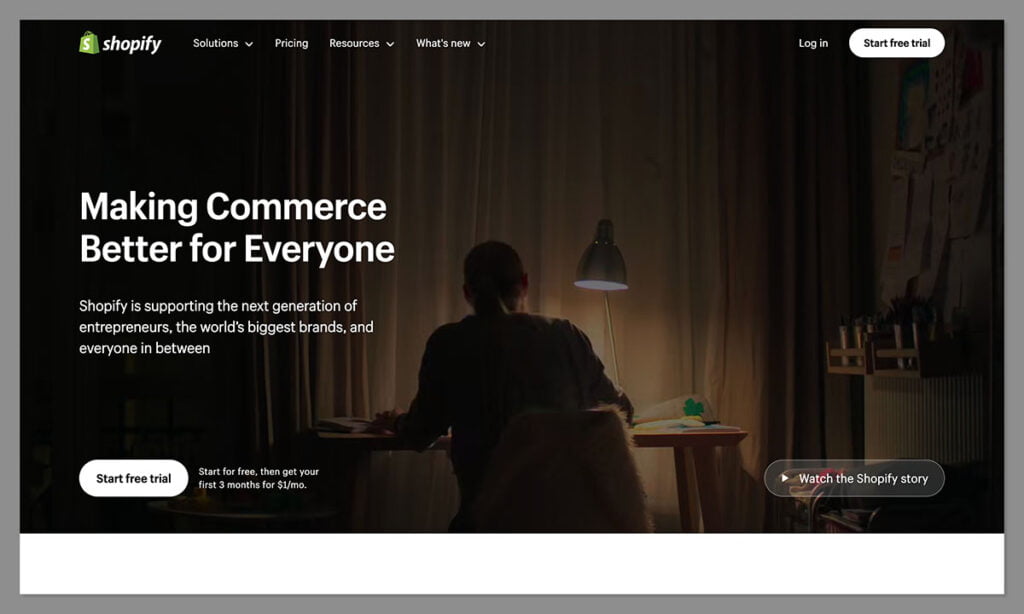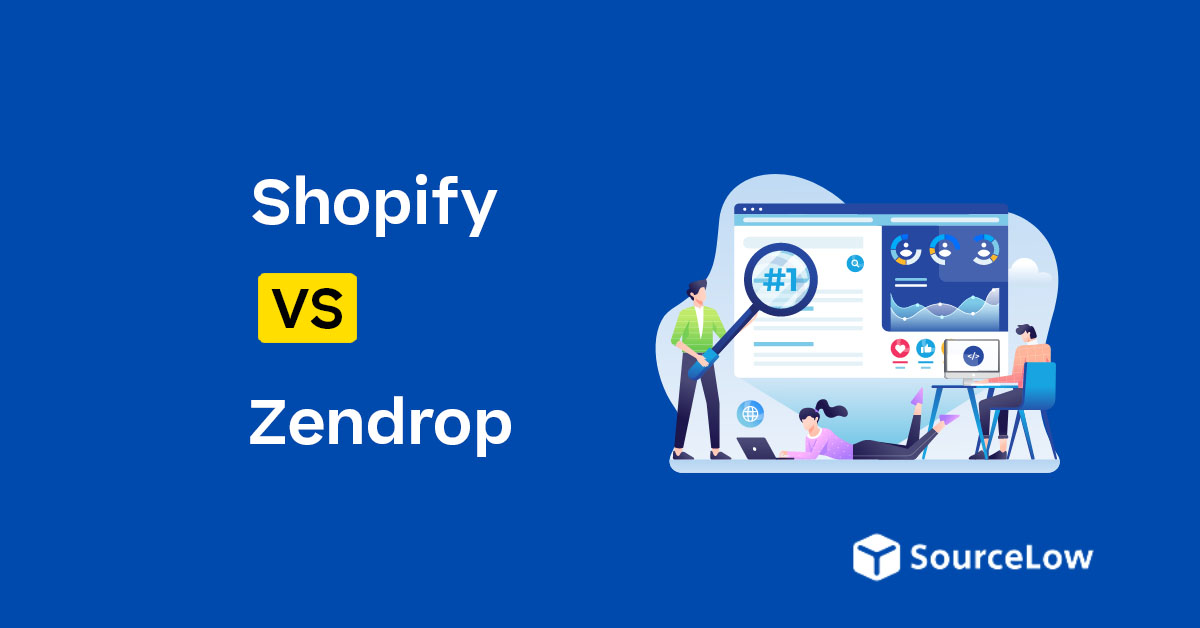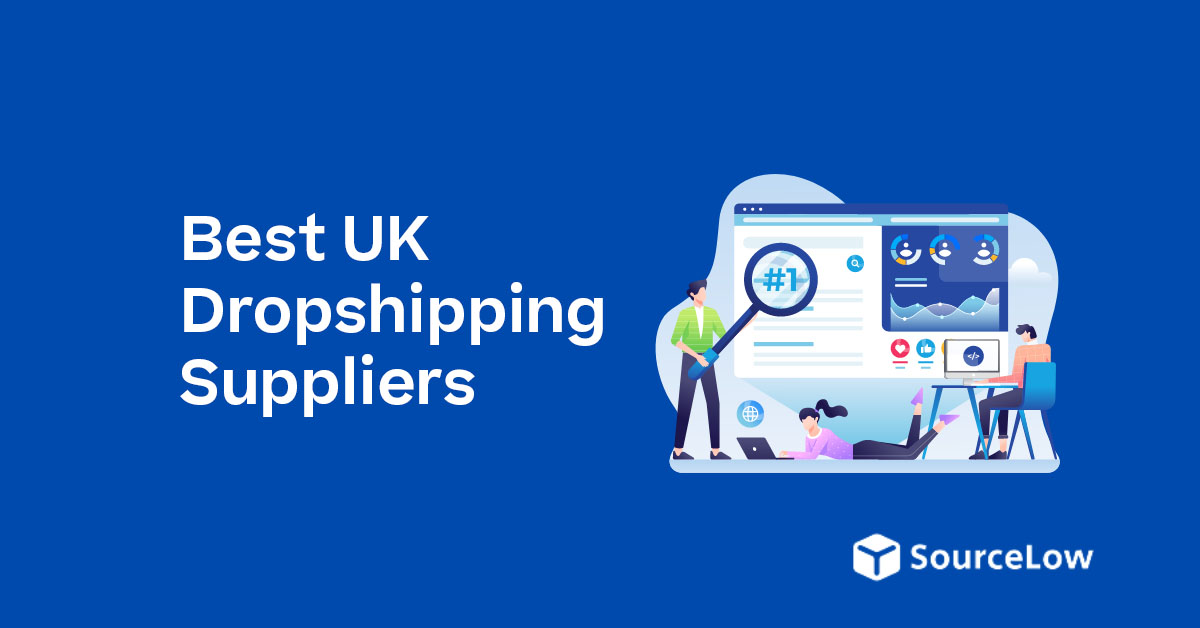Disclosure: We may earn a commission or fee from some of the links in our content. However, this does not affect our recommendations. Learn more.
I’ve compared a lot of platforms and tools with Shopify in the past. It’s by far one of my favorite omnichannel commerce platforms. However, this comparison was a little trickier than most. Zendrop isn’t an ecommerce platform after all, it’s a dropshipping app.
In fact, you can actually use Zendrop with Shopify (as well as ClickFunnels). So, you don’t necessarily need to choose option over the other. Still, if you need to know more about what each solution can do, this comparison guide will help.
Quick Verdict, Pros and Cons
In my opinion, Shopify is the obvious choice. It’s a comprehensive commerce platform that combines everything you need to build a brand and sell online. Zendrop is a fantastic dropshipping app, but it’s not a standalone solution, you’ll still need an existing store to sell your dropshipping products.
Shopify Pros and Cons:
Pros:
- Full omnichannel commerce platform and website builder
- Easy to use and flexible system for sales
- Integrates with thousands of apps, including Zendrop
- Powerful AI features
- Excellent inventory, order, and customer management
- Great themes and editing tools
Cons:
- Pricing can be expensive
- Transaction fees on third-party gateways
Zendrop Pros and Cons
Pros:
- Convenient and use-friendly interface
- Custom branding for dropshipping products
- Thousands of high-quality items
- Bundling and subscription options
- Real-time analytics
- Valuable self-help tools (including Zendrop academy)
Cons:
- Limited integration options
- Must be connected to an ecommerce platform
- Extra services can be expensive
Shopify vs Zendrop: Fees and Pricing
Before I dive into the features of Shopify and Zendrop, let’s take a quick look at the pricing. One point I should mention is that while there is a free plan for Zendrop, you will still need to pay for an ecommerce platform like Shopify to use the app.
The free version of Zendrop gives you access to more than 1 million dropshipping product, extensive customer support, product sourcing, industry-leading shipping times and quick order processing.
There are also two premium plans available, starting with “Pro” for $49 per month, which gives you unlimited orders per month, automated fulfillment, access to US products and custom branding.

The “Plus” plan, for $79 per month includes weekly coaching calls, access to Zendrop Academy, bundles, subscription boxes, chargeback management, a trending product finder, private product listing, and $100 order credits.
Shopify’s pricing starts at $5 for the Starter plan, but this doesn’t include access to the website builder. The core plans start at $39 per month for Shopify Basic, $105 per month for Shopify, and $399 peer month for Shopify Advanced. There’s also an Enterprise level plan, Shopify Plus, which starts at $2,300 per month.

Notably, Shopify does charge transaction fees for those who don’t use Shopify Payments (its integrated payment processor) to enable transactions.
Zendrop vs Shopify: Core Features
Now let’s dive into the features. As I mentioned above, since Zendrop is a dropshipping app, and Shopify is a commerce platform, there aren’t a lot of overlapping features between them.
So, rather than compare features side-by-side, like website design features and themes, let’s look at what each platform does best.
Zendrop’s Core Features
Zendrop is a comprehensive dropshipping application that integrates with tools like Shopify, allowing you to source and sell millions of products from worldwide manufacturers. There are countless amazing items to choose from, including those sourced directly from US vendors, so you can ensure you’re giving your customers fast shipping times.
Zendrop Pro users can even access expedited shipping, although Zendrop promises even its regular shipping times are faster than the industry standard. On all plans, users gain access to world-class support, but the more expensive paid plan does give you access to Zendrop Academy, where you can learn how to grow your brand and market your store from industry leaders.

Zendrop also allows users to sell subscription boxes and bundles, and customize their products with unique packaging and “Thank You” notes. Plus, you can order your inventory direct to the company’s US warehouses to cut down shipping times even further.
Like many dropshipping leaders, Zendrop also allows companies to automate fulfillment, and there are real-time analytical tools built-in to help you track the performance of your store.
Shopify’s Core Features
Since Shopify is a full omnichannel commerce platform, it comes with a lot more features than you’d get from Zendrop. First, you can sell products across a range of channels, from social media to marketplaces. Plus, Shopify has its own integrated point of sale (POS) system for in-store selling.
There’s a comprehensive website builder, which you won’t get with Zendrop, which allows you to create an eye-catching online store with themes.
I’m a huge fan of Shopify’s themes, as both the free and premium options are sophisticated, mobile-responsive, and highly customizable.

Shopify also has a built-in payment processor, a world-class checkout, and a host of powerful tools to help increase your sales, such as the ability to create gift cards and launch promotions. Plus, the platform makes it easy to manage your business with powerful tools for inventory, product, and order management. There are even tools for managing staff accounts and tracking customer behavior.
Speaking of tracking, Shopify’s analytical tools are fantastic too, offering in-depth insights into your sales numbers, customers, inventory, and cash flow.
Two areas where I think Shopify really stands out are flexibility and advanced AI features.
Shopify’s app marketplace is one of the biggest I’ve ever seen in the ecommerce space, allowing you to integrate with thousands of different tools for marketing, website design, analytics, accounting, and more. You can even integrate with Zendrop, as well as a range of other dropshipping and print on demand tools.
In terms of AI, Shopify has been adding advanced features to its platform for a while now. Shopify Magic allows you to generate FAQ pages, edit images, produce content, and more with just a few prompts. Alternatively, Shopify Sidekick helps you run your store with intelligent insights into how you can manage your inventory and improve store performance.
MORE: Best Shopify Dropshipping Suppliers
Zendrop vs Shopify: Ease of Use and Customer Support
If you’re looking for simplicity, both Shopify and Zendrop are exceptional tools. Zendrop makes it easy to start browsing for products, sourcing products from market leaders, and add items directly to your Shopify store. It even allows you to automate order fulfillment, to save you time and effort when it comes to building your store and earning revenue.
Zendrop’s analytical tools, reporting features, and branding options are also very straightforward and convenient. Shopify is also extremely user-friendly, but because it’s a full ecommerce platform, there is a slightly higher learning curve. It will take a little longer, in my experience, to figure out how to use all the features Shopify has to offer effectively.
However, once you’ve got the hang of the platform, running and managing your store takes very little effort. For customer support, Shopify offers 24/7 expertise through phone, live chat, and email. Plus, there are tons of great self-help resources, from blogs and guides to how-to videos.
Zendrop also excels at offering great resources to business leaders, with things like Zendrop Academy, and a handy help center. They also offer 24/7 customer support, but it’s mostly available through chat, and email. I couldn’t find any options to actually call the team. However, if you’re using a “Plus” plan, you will get live weekly coaching calls as part of the package.
Zendrop vs Shopify: The Final Verdict
Ultimately, Shopify is a more flexible, scalable, and robust platform overall, if you’re looking for a comprehensive ecommerce solution. However, Zendrop is an excellent dropshipping app, and one of my favorite for those who want to access high-quality products and fast shipping times.
You don’t really need to choose between the two. In fact, if you want to leverage dropshipping with Zendrop, you’re going to need an ecommerce platform too, and Shopify is the only ecommerce solution supported by the app. Still, if you choose Shopify, it’s worth remembering that you can explore a range of other dropshipping and print on demand apps, other than Zendrop.


